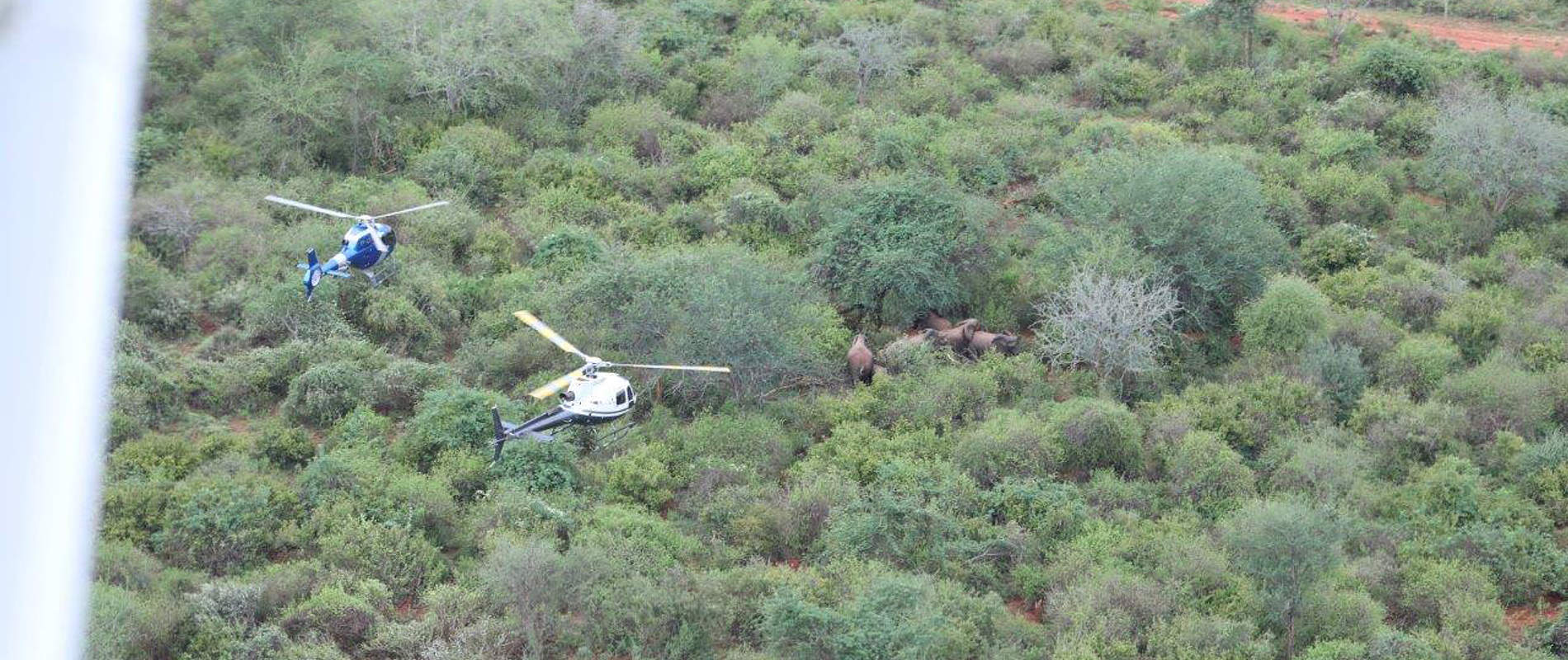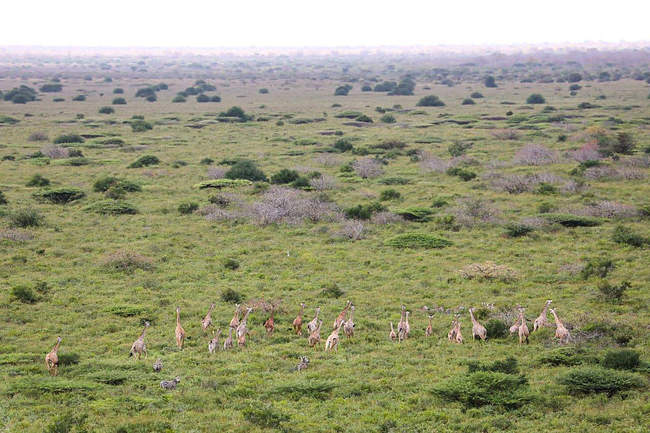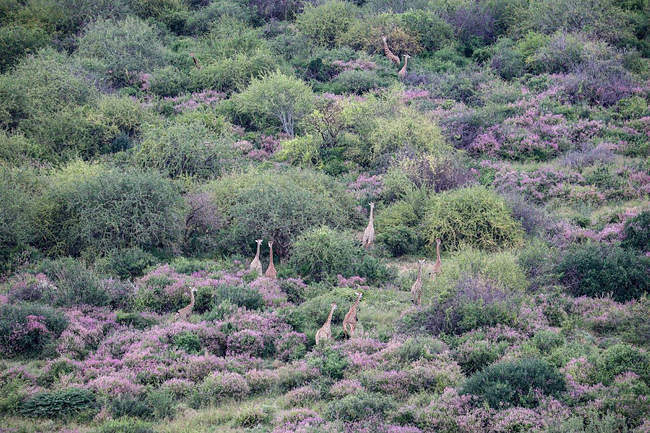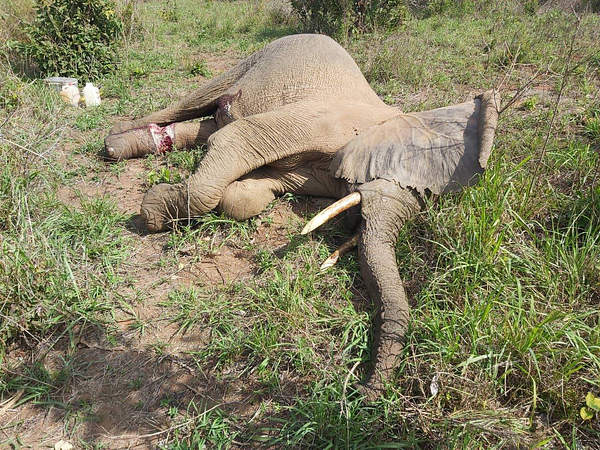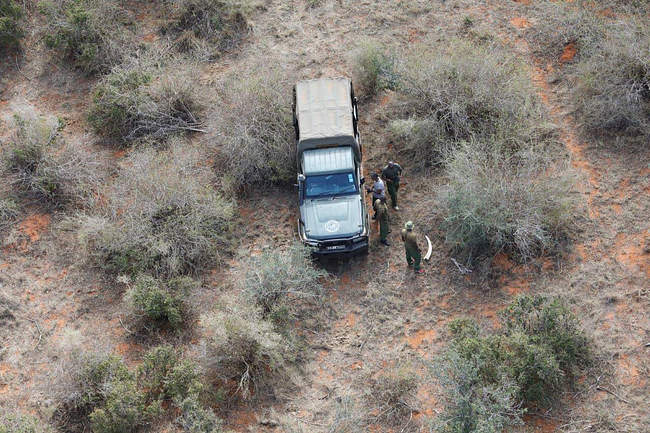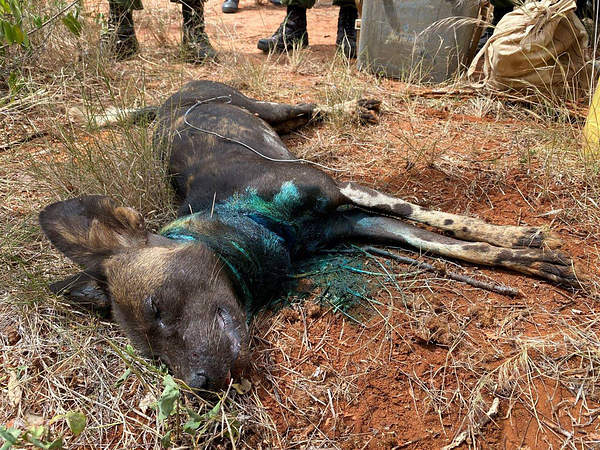May was an unusually busy month, especially for the helicopters, which saw an increase in human-elephant conflict (HEC) callouts over the previous month, and a significant rise in veterinary cases.
A total of 13 HEC cases were responded to in May, a number of which were responded to with both SWT helicopters to increase the success rate. This was the first time that SWT had experimented with two helicopters, and it proved incredibly effective.
Not all human-wildlife conflict involved elephants. Our helicopter was also used to try and push five giraffes out of a fenced area within Taita Ranch. The giraffes got stuck inside the fence when it was recently constructed and had reportedly been trapped there, without water, for around two months. The first attempt to push them by helicopter was unsuccessful, however, the team returned and after removing a longer section of fence, the helicopter was able to get four out of five of the giraffes out of the fence. The following day, the fifth giraffe had joined the others on the outside.
One helicopter as well as a fixed-wing aircraft were involved in the unsuccessful search for an orphaned elephant that had initially been sighted by tourists and later escaped an attempted rescue on the ground. Despite an extensive search from the air, the young elephant could not be located. Later on, we discovered that during the search, a tourist had witnessed an attack on the orphan by a pride of lions.
In terms of veterinary callouts, a number of cases were assisted by the airwing. Unfortunately, two of these had a tragic ending. One such case was a female elephant with a young calf that had been spotted on Kuku Ranch with an injured leg. A second heartbreaking case involved a wild dog seen with a horrific snare wound on its neck. The helicopter was also able to assist in the successful treatment of two elephants at Mwaluganje Elephant Sanctuary, one with a snare wound and the retreatment of a young bull that has been injured by a snare several months ago.
Livestock cases were on the rise in May, with the first major invasion into the Northern area of Tsavo East National Park for over two years. Similarly, large numbers of cattle were seen within Tsavo West NP, with as many as 19 bomas observed in a single flight. This is an ongoing problem which is exacerbated during the dry season when livestock herders, having depleted grass on their own land outside of the park, seek the relatively intact grazing in protected areas.
No poached elephant carcasses were found in May; however, three very old elephant carcasses were located with ivory intact. Tusks were all recovered by various ground teams and submitted to KWS for safekeeping. Some signs of bushmeat poaching were observed with three fresh/recent camps sighted as well as one old shooting blind. However, no active signs were observed. Other illegal activities seen in May included seven charcoal kilns within South Kitui National Reserve and one patch of marijuana being cultivated in Chyulu Hills National Park.
One of the Trust's aircraft also flew to Meru National Park to pick up an injured baby white rhino thought to be trampled. Sadly, the calf had serious internal damage and didn't survive.

Wildlife sighting highlights in the month included several packs of painted wild dogs, and leopards, as well as a large pride of 10 lions, which was witnessed on multiple occasions.
